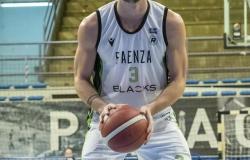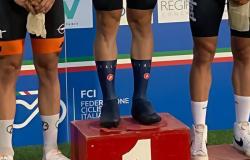Here is the link to follow the FirenzeToday whatsapp channel
Three ballots that the voters of Florence will receive at the polls today (from 3pm to 11pm) and tomorrow (from 7am to 11pm): a red one for the European elections, a blue one for the mayor and city council, and finally the green one for the president and district council.
All candidate names, lists and symbols on the ballot papers
In detail, how to vote
European Parliament
For the European elections you vote on the list (12 symbols present on the card for the central Italian constituency which also includes Tuscany) with the possibility of giving up to a maximum of three preferences, naturally all within the same list. If the voter expresses more than one preference, he or she can only vote for candidates of different sex, under penalty of cancellation of any preferences subsequent to the first. For example, yes to two men and one woman or vice versa, no to just two men or two women. The electoral system is proportional and those groups that exceed the 4% threshold at national level enter the European Parliament.
Mayor and city council
Ten mayoral candidates for Palazzo Vecchio, with 20 lists competing for the 36 places in the city council. A majority prize is expected, 60% of the seats for the coalition that supports the winning mayor. A mark can be drawn only on the name of the mayoral candidate (in this case the vote will not go to the connected lists) or on the symbol of a list (the vote will automatically also go to the mayoral candidate supported by that list), or both. And finally, it is possible to vote separately (giving preference to a mayoral candidate and to a list that supports another).
It is also possible to express up to two preferences for city councilors in the lines next to the mark, a man and a woman (gender alternation). In the case of preferences for two men or two women, the second is cancelled. 36 municipal councilors will be elected, while the party that supports the mayoral candidate elected by the majority of voters obtains the majority prize (60% of the seats). If no one reaches 50%+1 of the preferences, a run-off will take place, scheduled for 23 and 24 June.
President and neighborhood council
 As an example, we took the ballot for District 1. Mechanism similar to that of the Municipality, but no separate voting or run-off: whoever gets one more vote is elected president. You vote either by drawing a sign on the presidential candidate or on the symbol of a list that supports him. Here too you can indicate up to two preferences, a man and a woman.
As an example, we took the ballot for District 1. Mechanism similar to that of the Municipality, but no separate voting or run-off: whoever gets one more vote is elected president. You vote either by drawing a sign on the presidential candidate or on the symbol of a list that supports him. Here too you can indicate up to two preferences, a man and a woman.







